
Different types of fish fins. Pectoral Fin shape has important effects
Fins are moving appendages protruding from the body of fish that interact with water to generate thrust and help the fish swim. Apart from the tail or caudal fin, fish fins have no direct connection with the spine and are supported only by muscles .

Koi Fish Skeleton Anatomy Diagram, Koi Fish External Anatomy Diagram
Fish Fin Diagram Fish Fins Image; Source: ResearchGate Fish Fin Types | Fish Fin Names There are different types of fish fins based on their functions and positions. Broadly fins are categorized on two type, Median (Unpaired) fins: Dorsal, caudal and anal fins Lateral (Paired) fins: Pectoral and pelvic fins
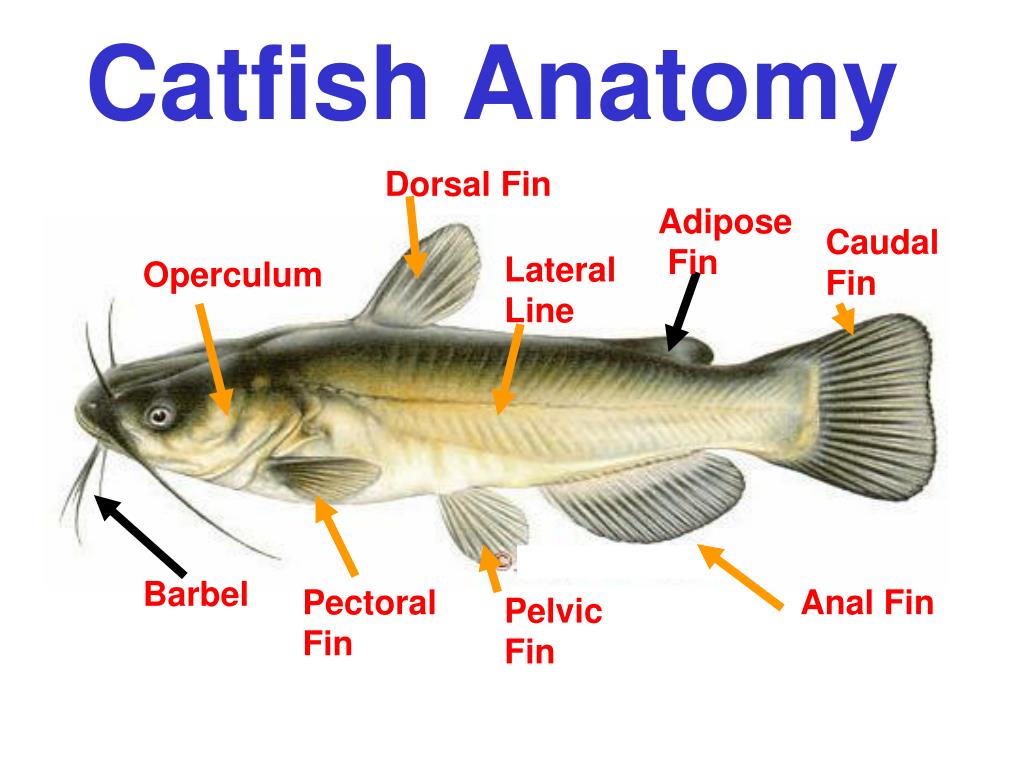
Catfish Anatomy Anatomy Book
Gill Gill cover Lateral line Mouth Nostril Pectoral fin Pelvic fin Scales Fish Body Parts Diagram Description of Each Part of the Fish Here is a short description of each body part and how it functions to help the fish survive and thrive in the water. Anal fin

Fish Morphology Worksheet
Fish may have up to three distinct dorsal fins, known as proximal, middle , and distal dorsal fins, however several fish have just two dorsal fins with the middle and distal fins fused together. The type of Doral fins are: Single Split Pointed Trigger Spine Triangular Trailing Tail Fin or Caudal fin
:max_bytes(150000):strip_icc()/a-Anatomy-of-an-aquarium-fish-6-5802ebd25f9b5805c2b2948b.jpg)
The Anatomy of Fish
Updated on November 10, 2019 Fish come in many shapes, colors and sizes. There are thought to be over 20,000 species of marine fish. But all bony fish (fish that have a bony skeleton, as opposed to sharks and rays, whose skeletons are made of cartilage) have the same basic body plan. Piscine Body Parts

Sharks Streamlined Swimmers Harvard Museums of Science & Culture
Tools of Fins. Fish use their fins for various purposes. Some important functions von fins are described at: Universal, of pectoral fins help an fish on turning. Some bony fishes use his pectoral fins to help them calm on the base or on riff zones (e.g. Cirrhitichthys). Mudskippers (Periophthalmidae family) use chest fins to supporting.
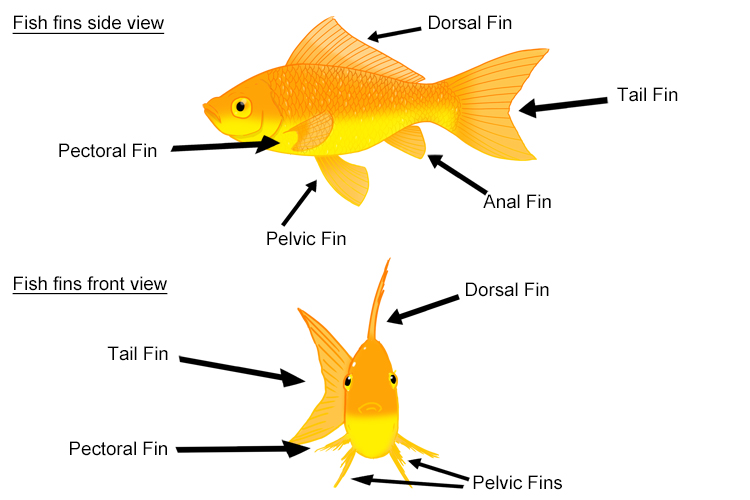
fish facts on Tumblr
The contractions whip the tail fin against the water to propel the fish through the water. Most fish have a swim bladder. This is a balloon-like internal organ that contains gas. By changing the amount of gas in the bladder, a fish can move up or down through the water column. General Fish Body Plan. A fish has a stream-lined body with gills.
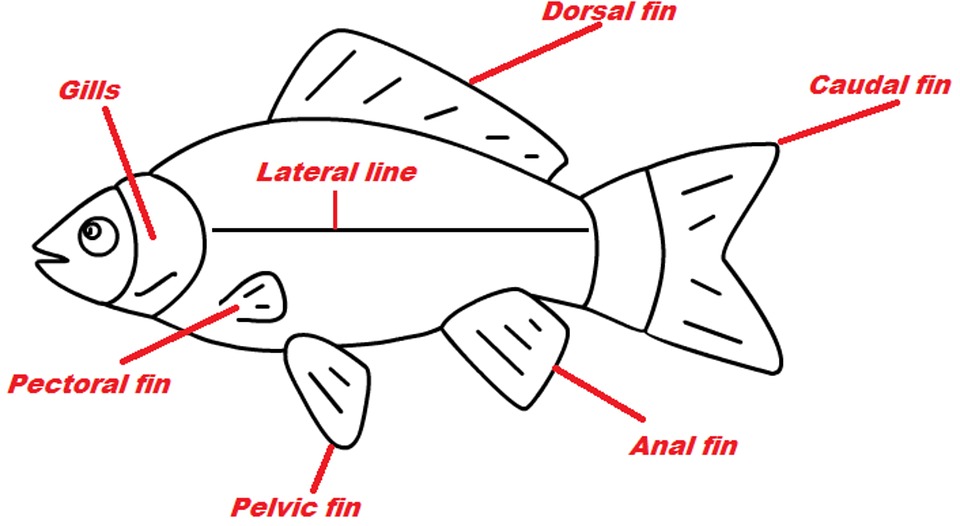
Fish Facts For Kids Cool Kid Facts
External anatomy of a bony fish ( Hector's lanternfish ): 1. operculum (gill cover), 2. lateral line, 3. dorsal fin, 4. adipose fin, 5. caudal peduncle, 6. caudal fin, 7. anal fin, 8. photophores, 9. pelvic fins (paired), 10. pectoral fins (paired) Internal anatomy of a bony fish Fish anatomy is the study of the form or morphology of fish.

Animal Science, Science Art, Fish Anatomy, Animal Anatomy, Underwater
In this article we will discuss about the fin system of fishes with the help of suitable diagrams. Fins: Fins are the chief organs of locomotion in fishes. These are either folds of skin or projections from the body surface. The fins are supported by fin-rays. These supporting rays may be bony, cartilaginous, fibrous or horny.

Caudal Fin Types — Koaw Nature
Download scientific diagram | Different types of fish fins. Pectoral Fin shape has important effects for swimming hydrodynamics, usual habitat uses and energetics as shown in [14]. Many different.
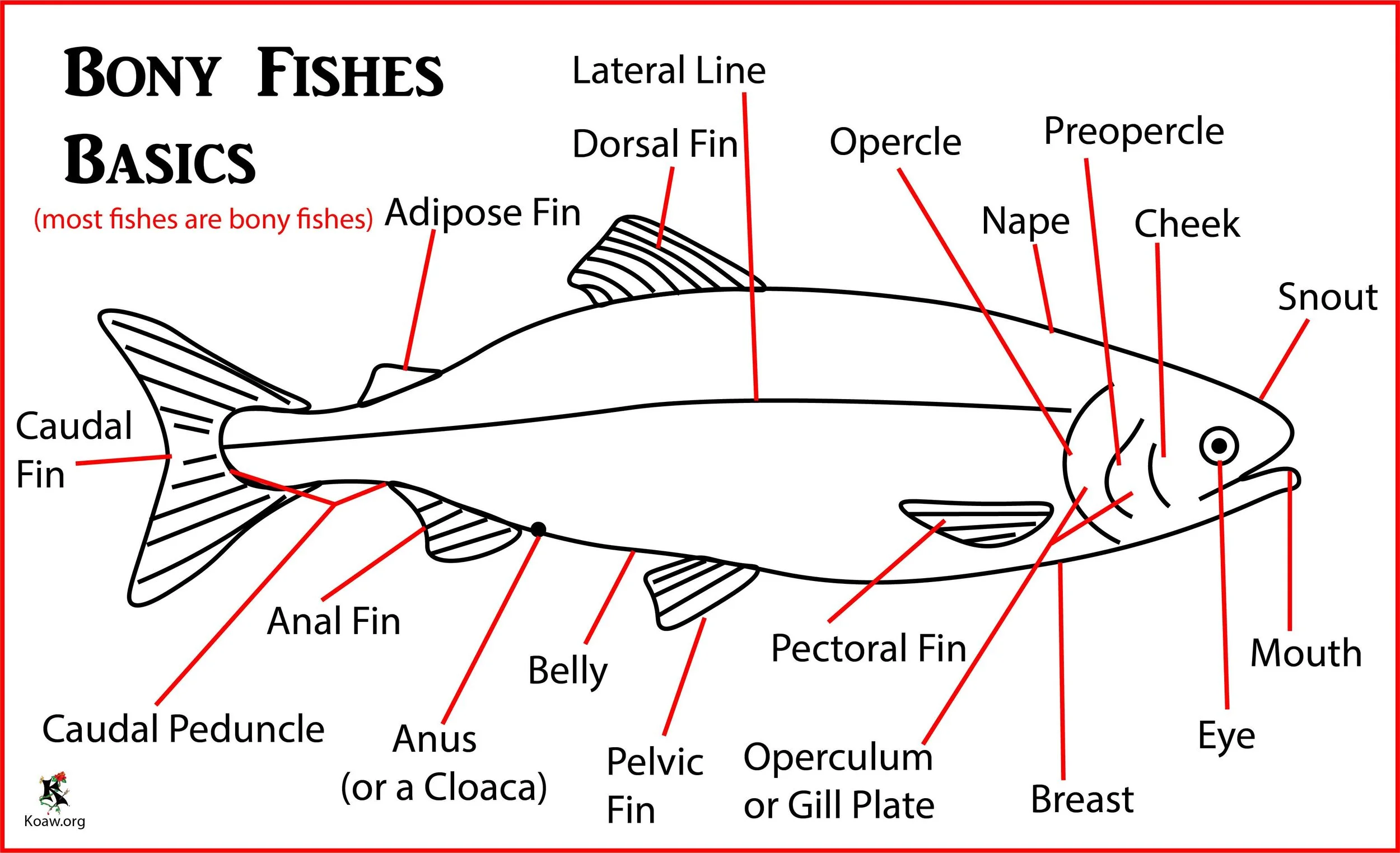
Koaw Illustrations Fish Identification Morphology, Anatomy, Features
Explore the diagram below to learn the names of fish parts and find out what each one does, or use it as a reference as needed. We couldn't include all the features of every kind of fish, so we started by showing three different types - a shark, spiny-rayed fish and soft-rayed fish. General anatomy of fishes Interactive diagram -
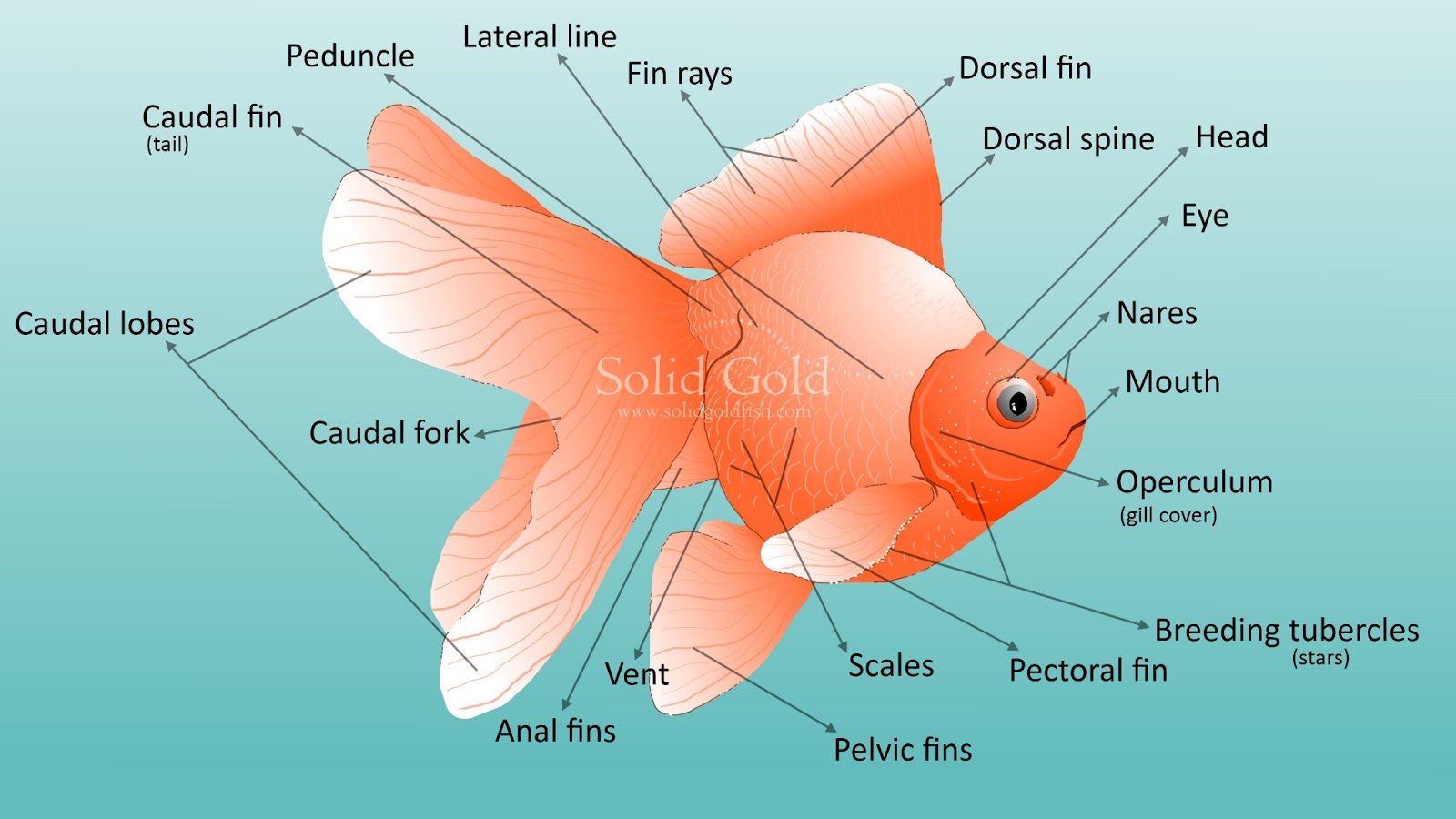
Goldfish External Anatomy Solid Gold Aquatics
The Spruce / Thomas Reich. There are many exceptions to the rule in the world of fish, as there are in the world of the mammal but, in general fish, the common fish found in freshwater aquariums are standard anatomy.. The fish body is composed mainly of a large lateral muscle on each side of the backbone, divided by sheets of connective tissue into segments corresponding to the vertebrae.
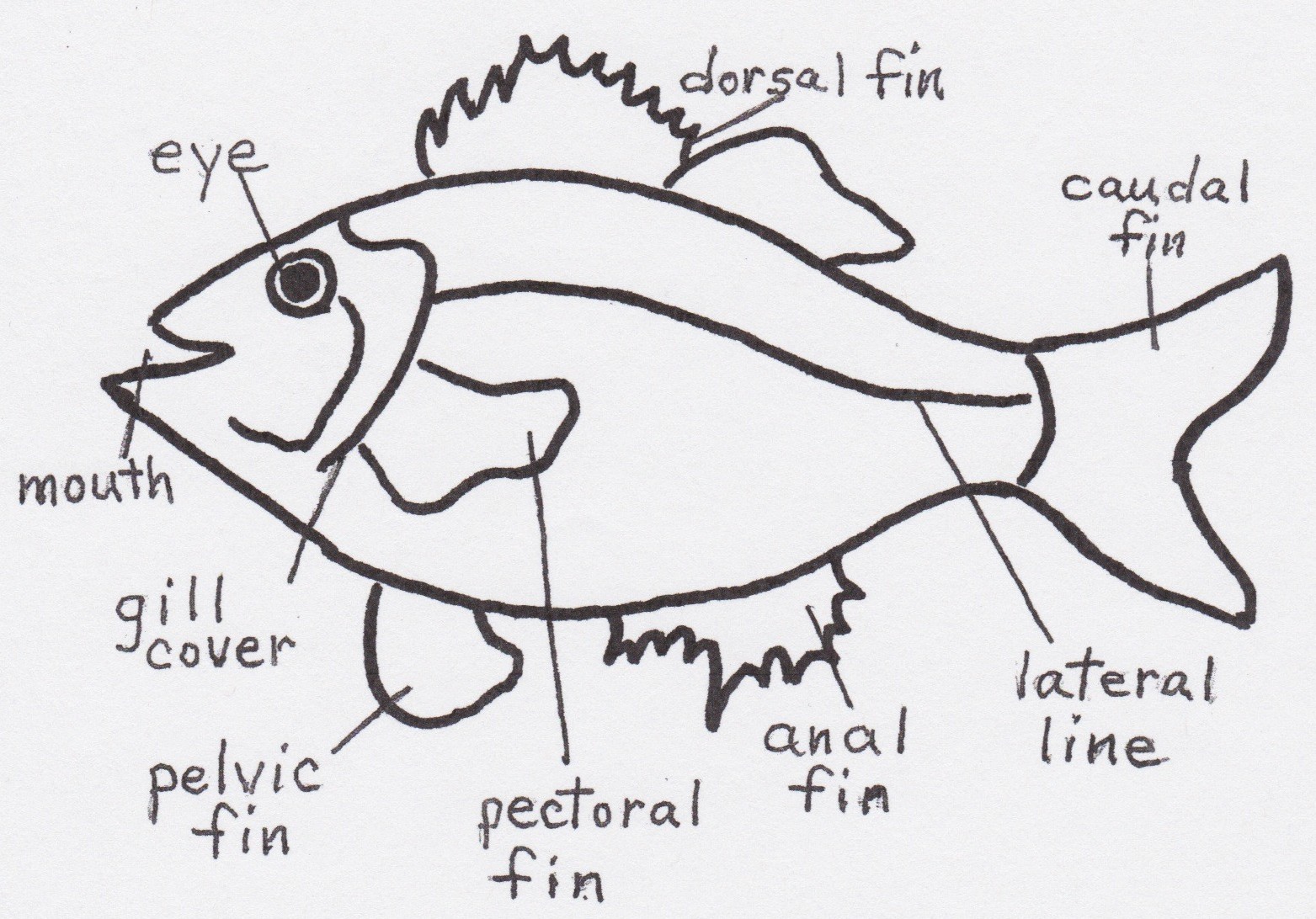
Here is a basic diagram of the main parts of a fish
Fig. 4.18. Common orientation terms applied to three different animals: a billfish, a horse, and a person. Image by Byron Inouye Scientists measure and describe the external features of fishes to identify species, assess age and health, and learn about structure and function. Scientists work with a variety of types of fishes to do this.
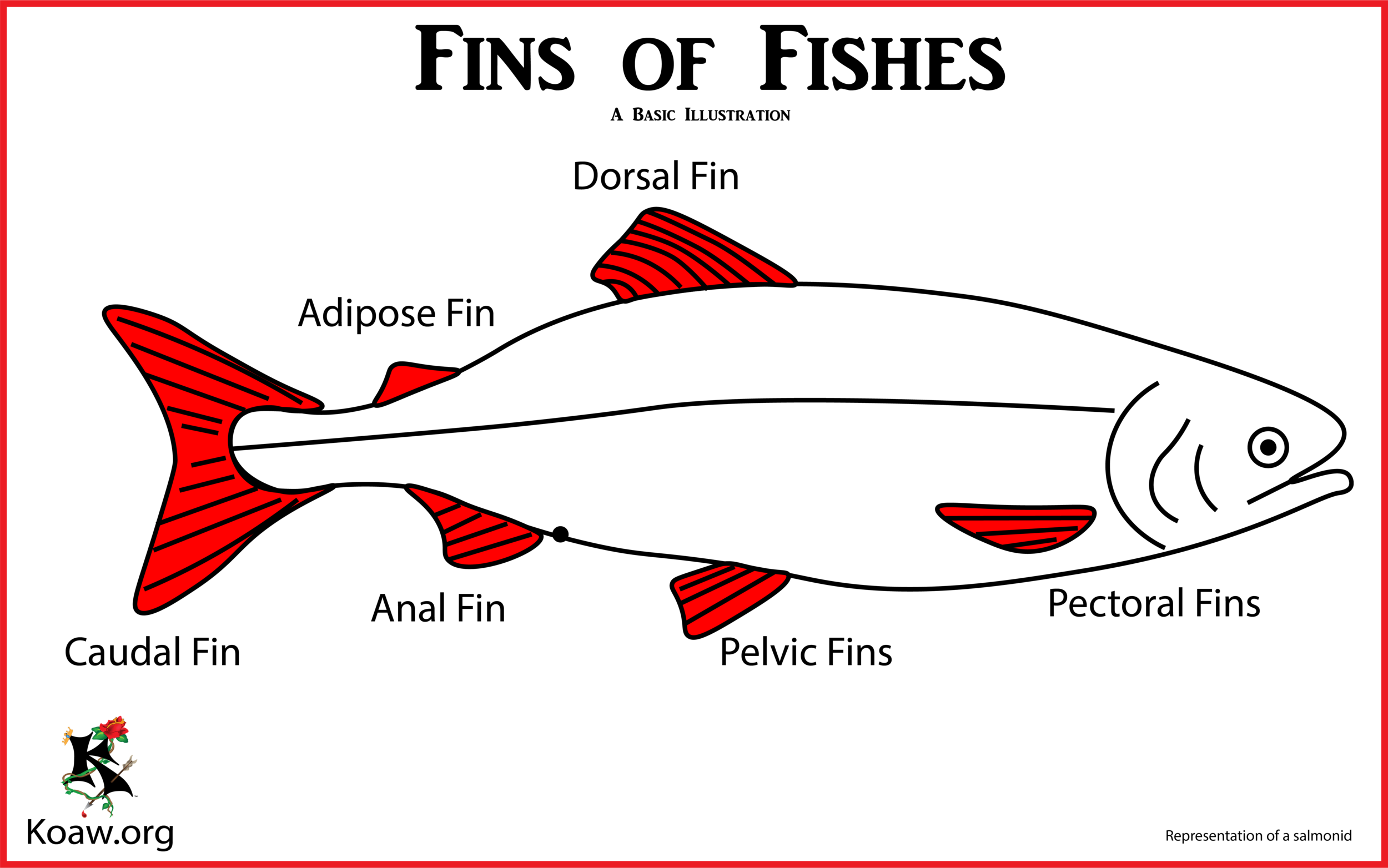
Fins of Fishes — Koaw Nature
Most fish breathe dissolved oxygen from the water, through the use of their gills. The majority of fish use fins for movement and their skin is covered with scales. The diagram below outlines the general anatomical features of fish: Main Features • Eyes: Fish eyes are very similar to those of terrestrial animals, like birds and mammals,
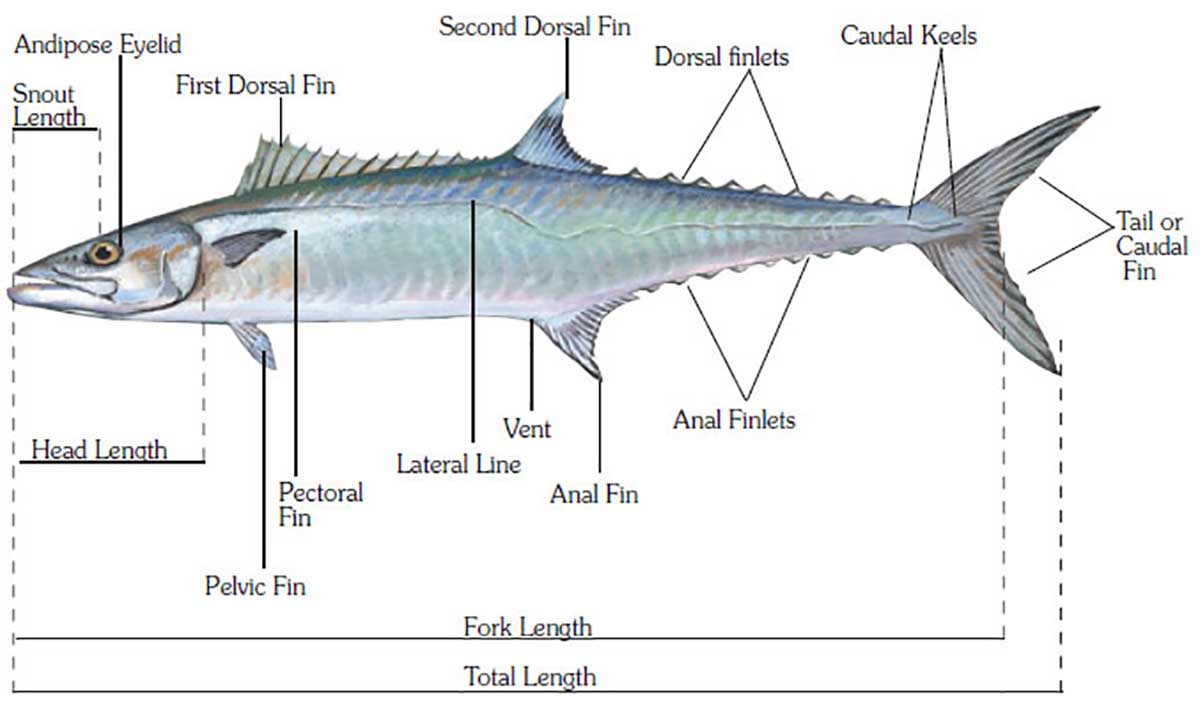
Bony Fishes Salt Marsh Guide Guide to the Salt Marshes and Tidal
The fins of a fish are appendages used to move, steer, stop or position. The fins also give the fish balance in the water. The fins could be single fins (such as the anal fin, the back or dorsal fin, and the caudal or tail fin) or paired fins (they include pelvic or hip fins and pectoral or chest fins) along the centerline of the fish.
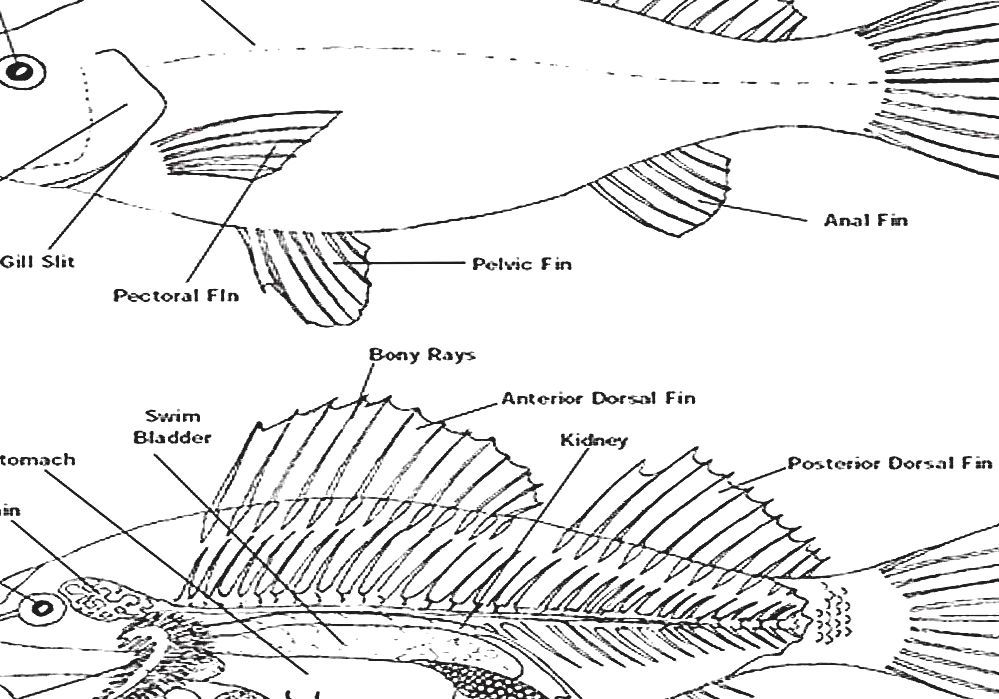
Fish Anatomy Fish Fins
Printouts. Read the definitions, then label the fish diagram below. (Note: not all fish have all of the fins defined below.) anal fin - the fin on the lower side of the body near the tail. caudal fin - the tail fin. dorsal fin - the fin on the upper side of the body. eye - sight organs located on the head. gills - fleshy organs that are used.